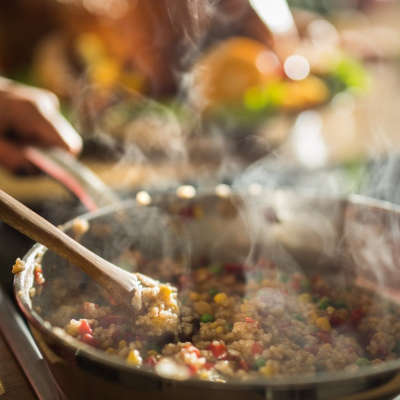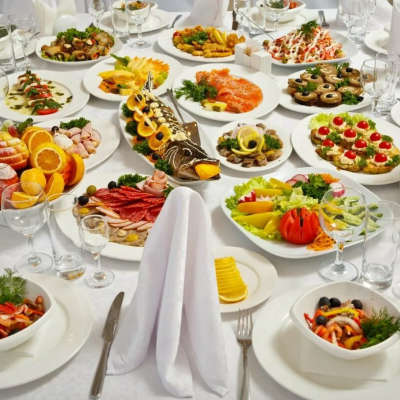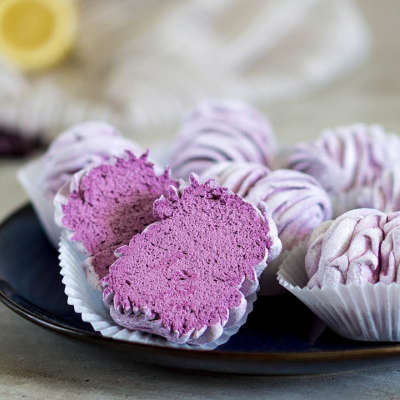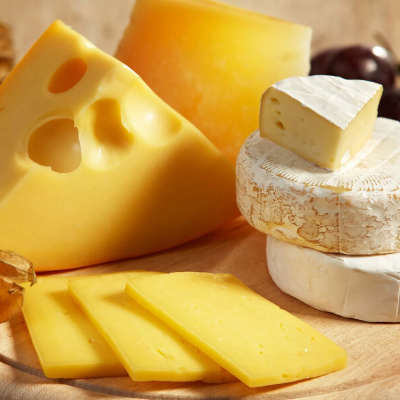Culinary Techniques: How to Sear, Boil, Roast, and Simmer
Discover the secrets of culinary techniques - from searing and boiling to roasting and simmering. Learn how to choose the right cooking methods for each ingredient, avoid common mistakes, and create dishes with unique flavor and aroma.
15 April 2024
Introduction to Culinary Techniques
Frying: Basic Principles and Tips
Boiling: Fine Points of Cooking with Water
Baking: Secrets to Preserving Flavor and Juiciness
Braising: Achieving Tenderness and Flavor
Common Mistakes in Using Culinary Techniques
How to Choose the Appropriate Cooking Method for Specific Ingredients?
Healthy Eating and Culinary Techniques: Dietitians' Advice
Innovations in the Culinary World: New Cooking Methods
Summary and Recommendations for Successful Use of Culinary Techniques
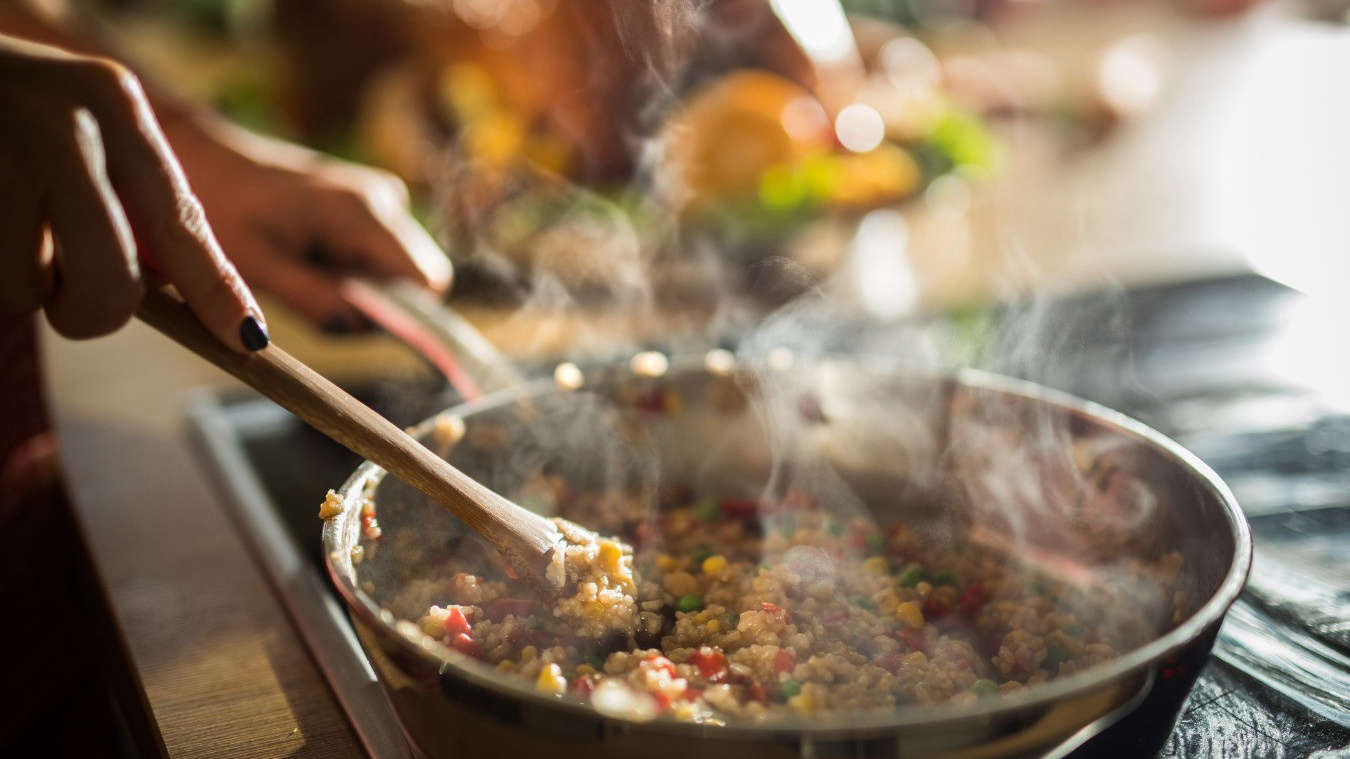
Introduction to Culinary Techniques
Culinary techniques are an integral part of the art of cooking, transforming simple ingredients into magical dishes rich in aromas and flavors. It's a kind of language spoken by chefs around the world, transmitting traditions and innovations through food preparation.
Each culinary technique has its secrets and rules that allow achieving optimal results in cooking. It's necessary to know how to combine and apply them depending on the specific ingredients, recipe, and desired final outcome.
Searing, boiling, roasting, and simmering are the four main culinary techniques that provide a wide range of possibilities in cooking. Each of them has its characteristic features and methods of application, which determine the final taste and texture of the dish.
Mastering culinary techniques requires understanding the basic principles of heat treatment, the ability to control temperature and cooking time, as well as a creative approach to experimenting with ingredients.
Cooking is not just a process but also an art that requires love, patience, and attention to detail. Culinary techniques help unleash the full potential of ingredients, creating unique flavor combinations and culinary masterpieces.
Mastery of culinary techniques not only enriches culinary experience but also allows expanding the culinary repertoire, surprising loved ones and friends with new flavors and dishes.
Frying: Basic Principles and Tips
Frying is one of the most common culinary techniques that impart characteristic taste and aroma to dishes. The main principle of frying is to evenly brown the product on the surface while preserving its juiciness inside. To achieve this, it is necessary to prepare the product correctly: dry it, if necessary coat it in flour or egg with milk to create a protective crust.
It is important to remember that for frying, you should use a sufficiently hot skillet or pan with heated oil or fat. The temperature should be high enough to ensure the formation of a golden crust on the surface of the product but not too high to avoid burning it.
During frying, the products should be periodically turned to ensure even heating on both sides. This helps achieve uniform browning and prevent burning on one side.
For frying meat or fish, it is better to use slightly heated fat, such as vegetable oil or butter, to ensure juiciness and a pleasant taste. For frying vegetables, you can also use olive oil or coconut oil for added flavor.
It is not advisable to overcrowd the skillet or pan with products during frying, as this may lead to uneven heating and deterioration of the dish's quality. It is better to fry the products in batches to ensure that each of them has enough space for even browning.
After frying, the products should be placed on a paper towel to remove excess fat and preserve juiciness. Additionally, you can sprinkle the finished dish with herbs or spices to add extra aroma and flavor.
Boiling: Fine Points of Cooking with Water
Boiling in water is one of the simplest and most common methods of cooking, allowing you to preserve the natural taste and nutrients of the ingredients. The basic principle of boiling is to fully immerse the ingredients in boiling water and cook them until done.
For boiling in water, it is necessary to choose a sufficiently large pot or saucepan so that the ingredients have enough space for free stirring and boiling. It is also important to monitor the water temperature and avoid overheating it to prevent overcooking or mushiness of the ingredients.
When boiling in water, it is important to add enough salt to the water to give the ingredients flavor and preserve their texture. You can also add spices, herbs, or vegetables to impart additional aroma and flavor to the dish.
To preserve the color and texture of vegetables when boiling in water, it is recommended to use a large amount of water and cook them quickly until done. After boiling, the vegetables should be rinsed with cold water or soaked in ice to stop the cooking process and retain their freshness.
When boiling meat or poultry in water, it is important to maintain a low temperature and cook for a long time to achieve tenderness and juiciness. You can add vegetables or onions to the water to give the broth extra flavor and aroma.
One of the secrets to successful boiling in water is the correct ratio of ingredients to water to achieve the optimal balance of moisture and texture. It should be noted that excessive water can dilute the taste and degrade the quality of the dish.
After boiling, the ingredients should be carefully removed from the pot or saucepan using a colander or slotted spoon to drain excess water. You can also let the ingredients dry slightly on a colander or pat them dry with a paper towel before serving.
Baking: Secrets to Preserving Flavor and Juiciness
Baking is one of the most versatile and delicious culinary techniques, allowing you to create dishes with rich aromas and juicy flavors. The fundamental principle of baking is to cook the ingredients in an oven or other enclosed space using heat from above and below.
One of the key secrets to successful baking is the right choice of temperature and cooking time. It is important to consider the characteristics of each dish and its ingredients to achieve the optimal combination of texture, color, and taste.
To preserve the juiciness of the ingredients during baking, it is recommended to use fatty ingredients such as butter, cream, or sauces. They help create a protective crust around the ingredients, which retains moisture inside, keeping them juicy and tender.
It is important to remember that the choice of suitable cookware also matters when baking. For more even heating and moisture retention, it is better to use deep pans or skillets with lids, which provide more even heat distribution.
One of the secrets to preserving flavor when baking is the right combination of ingredients and seasonings. They can be used to give the dish additional aroma and taste, emphasizing its main qualities and adding new nuances.
To achieve a crispy crust when baking, various methods can be used, such as coating the ingredients in breadcrumbs or a mixture of dry spices. They help create a caramelized surface that adds extra flavor and texture to the dish.
It is important to remember to control the baking process and periodically check the readiness of the dish. This helps avoid over-drying or overcooking the ingredients, preserving their juiciness and aroma.
After baking is complete, it is recommended to let the dish sit for a while before serving, allowing it to cool slightly and soak up its own flavor qualities.
Braising: Achieving Tenderness and Flavor
Braising is a culinary technique where ingredients are cooked in their own juices at low temperatures, allowing them to retain their tenderness and flavor. The main principle of braising is to cook the ingredients slowly in a covered pot with minimal liquid, allowing them to slowly heat up and seal in their natural juices.
For braising, it's best to choose tender and juicy ingredients such as meat, poultry, fish, or vegetables, which can withstand long cooking times without losing their qualities. It's also important to slice the ingredients properly to ensure even heating and to acquire softness and tenderness.
When braising, it's recommended to use aromatic spices, herbs, and vegetables to add extra flavor to the dish. You can also add aromatic liquids like wine, broth, or sauces to enhance the dish's taste.
To achieve maximum tenderness when braising, it's advisable to use low temperatures and long cooking times. This allows the collagen in the meat to turn into gelatin, making the meat more tender and juicy.
One of the secrets to successful braising is choosing the right cookware. Deep pots or pans with thick bottoms are best, as they ensure even heat distribution and prevent ingredients from overheating.
It's important to stir the dish occasionally during braising to ensure even heating and prevent sticking to the pot. This also helps blend the aromas and flavors of the ingredients, making the dish more flavorful and delicious.
After braising, the ingredients should have a soft texture and rich taste. To further enhance the aroma and flavor of the dish, you can add fresh herbs, lemon juice, or other aromatic ingredients before serving.
Common Mistakes in Using Culinary Techniques
One of the common mistakes in using culinary techniques is insufficient preparation of ingredients. It's essential to properly chop, clean, or process ingredients before cooking to ensure even and high-quality preparation.
Another mistake is the improper choice of cookware for specific culinary techniques. Different dishes require different cookware: use a frying pan for frying, a pot for boiling, and a deep dish for baking. Using unsuitable cookware can result in uneven cooking and loss of flavor.
A frequent mistake in cooking dishes is the inadequate use of herbs and spices. They play a crucial role in creating the taste and aroma of a dish. It's necessary to dose and combine spices correctly to achieve the optimal taste.
Another common mistake is overheating oil during frying. Overheated oil can become bitter and spoil the taste of the dish. It's essential to monitor the oil temperature and avoid overheating.
It's also necessary to avoid oversalting dishes. Too much salt can ruin the taste and overpower the natural flavor of the ingredients. It's better to add salt gradually, tasting and adjusting the amount.
One mistake in boiling is using too little water. It's important to remember that water evaporates during boiling, so its level should be monitored and adjusted if necessary.
Another common blunder is excessive stirring of the dish during cooking. Stirring too often or too vigorously can lead to loss of texture and juiciness of the ingredients.
Also, don't forget to control the oven temperature when baking. Excessively high temperature can lead to burning or drying out of the dish.
One of the common mistakes in braising is overheating and drying out the ingredients. It's important to monitor the temperature and cooking time to keep the ingredients juicy and tender.
It's also essential to remember that experiments in cooking can lead to unexpected results. However, even from mistakes, lessons can be learned and one can develop as a cook.
How to Choose the Appropriate Cooking Method for Specific Ingredients?
When choosing a cooking method for specific ingredients, it's important to consider their characteristics, texture, moisture content, and flavor profile. Some products, such as meat or fish, can be prepared in various ways, while others, like vegetables, may be more suited to specific methods.
One of the key factors in choosing a cooking method is the amount of time you're willing to dedicate to preparing the dish. Some methods, like frying or braising, may require more time, while others, like boiling or baking, can be quicker.
The texture of the product also plays a crucial role in selecting the cooking method. For example, to retain the juiciness and tenderness of meat, baking or braising methods are often used, whereas for crispy vegetables, frying or steaming may be preferred.
It's also important to consider the goal of preparing the dish. If you aim to preserve the maximum nutrients, it's preferable to use methods that minimally process the ingredients, such as boiling or baking. If your goal is to impart rich flavor and aroma to the dish, it's better to choose methods that allow for the use of more spices and seasonings, such as frying or braising.
Another factor to consider when choosing a cooking method is the availability of equipment and ingredients. Some methods may require special equipment or specific ingredients that may be unavailable or costly.
To achieve the best results, it's recommended to experiment with different cooking methods and observe the changes in texture, taste, and aroma of the dish. It's also helpful to learn about the basic principles of each cooking method and their impact on the final outcome.
Remember that there's no one-size-fits-all cooking method that works for all ingredients. The choice of method depends on individual preferences, cooking goals, and available resources.
Healthy Eating and Culinary Techniques: Dietitians' Advice
When following the principles of healthy eating, the choice of cooking techniques plays a crucial role in preserving the nutrients in foods. One important piece of advice from dietitians is to prefer cooking methods that minimally process foods, such as boiling or baking, to preserve their beneficial properties.
Steaming is also one of the recommended methods by dietitians, as it allows retaining most of the vitamins and minerals that are typically lost in other cooking methods. Additionally, it doesn't involve the use of oil or fat, making dishes lighter and less greasy.
It is also important to consider the combination of ingredients when preparing dishes. Dietitians recommend combining proteins, carbohydrates, and fats in the right proportions to provide the body with all the necessary nutrients. For example, combining proteins from meat or fish with carbohydrates from vegetables or grains makes the dish more balanced and nutritious.
When choosing oil for cooking, dietitians recommend preferring unrefined oils, such as olive oil or coconut oil. They are rich in beneficial fatty acids and antioxidants, which promote heart and vascular health.
To reduce sugar and calorie intake, dietitians advise replacing it with natural sweeteners, such as honey, maple syrup, or fruit puree. This allows maintaining the sweet taste of dishes while reducing their calorie content and glycemic index.
One important aspect of healthy eating is proper heat treatment of foods. Dietitians recommend avoiding overheating oil and prolonged stewing of products to minimize the loss of nutrients and preserve their taste and aroma.
When choosing a cooking method for dishes, it is also worth considering the preferences and needs of each family member. For example, for children or elderly relatives, it may be preferable to choose lighter and less fatty dishes, while for active athletes, more nutritious and calorie-rich dishes may be preferred.
Innovations in the Culinary World: New Cooking Methods
The modern culinary world is in constant motion and development, introducing new cooking methods that change our perception of cooking and the taste of dishes. One such innovative method is the use of molecular gastronomy, which allows creating dishes through chemical and physical processes at the molecular level.
Another example of an innovative approach to cooking is the use of 3D printing technology. With its help, culinary masterpieces can be created, impressing not only with taste but also with appearance. This opens up new possibilities for creating unique desserts and dish decorations.
Another innovative method is the use of robots in cuisine. They are capable of performing routine operations such as slicing, mixing, or cooking according to a recipe, which increases the efficiency and quality of preparation.
With the development of technologies, new methods of food preservation emerge, preserving their freshness and nutritional properties for a long time. One example is cold preservation, where products are processed without heating, allowing them to retain their vitamins and minerals.
Innovations also affect the area of food packaging. New materials and technologies emerge, making packaging more convenient, environmentally friendly, and durable, which contributes to the preservation of product freshness and quality.
With the development of internet technologies, new opportunities for culinary education emerge. Online courses, video tutorials, and applications help people learn new recipes and cooking methods right from home, expanding culinary horizons.
An important direction of innovation in cuisine is the development of new products and ingredients. This includes creating meat substitutes based on plant proteins, as well as developing new varieties of vegetables and fruits with improved taste and nutritional qualities.
Innovations in culinary technology are also aimed at increasing safety and convenience in cooking. This includes the development of smart kitchen appliances with automatic temperature control, timing, and ingredient dosing functions.
Summary and Recommendations for Successful Use of Culinary Techniques
When using culinary techniques, it's important to remember several key points that can determine the success of dish preparation. Firstly, it's essential to choose the cooking method carefully depending on the type of ingredients and cooking goals. This will help preserve their nutritional properties and flavor.
Additionally, attention should be paid to preparing ingredients before starting cooking. Take your time to properly slice, clean, or process the ingredients - this will ensure even cooking and enhance the dish's flavor.
A crucial aspect of successfully using culinary techniques is controlling the cooking temperature. Overheating or undercooking ingredients can lead to loss of texture, flavor, and nutrients. Therefore, regularly monitor the temperature and adjust it as needed.
Don't forget the importance of combining ingredients and seasonings to achieve the optimal flavor of the dish. Choose spices, herbs, and sauces that harmonize with the main ingredients and enhance their taste.
For successful use of culinary techniques, it's also important to be creative and experiment with new recipes and cooking methods. Discover new flavors, combinations, and techniques to diversify your culinary experience and delight yourself and your loved ones.
Remember to take care of your kitchen utensils and equipment. Regularly clean and maintain pots, pans, ovens, and other kitchen appliances - this will help preserve their functionality and durability.
Another important aspect of successful use of culinary techniques is the ability to assess the readiness of dishes. Don't forget to check the readiness of ingredients using a fork, knife, or food thermometer - this will help avoid undercooked or overcooked dishes.
Keep in mind the importance of balance in nutrition. Strive for variety and balance in your diet, including different types of ingredients and cooking techniques.
In conclusion, successful use of culinary techniques requires attentiveness, creativity, care, and experience. By following these recommendations, you can achieve excellent results in preparing delicious, nutritious, and wonderfully aromatic dishes.

